
When we think of the past, one of the first thoughts that runs through our mind is how people lived without electricity. Nowadays, we can’t even imagine a day without it because all of our appliances and devices run on electricity.
The truth is, however, that most homes don’t have enough power outlets to keep everything running and charged, so most of us rely on power strips without being aware that appliances that consume a lot of energy become dangerous fire hazards when we plug them into a power strip.
Although power strips are the thing to go to when it comes to charging your phone or power an entertainment setup, there are certain devices that should never be plugged into a power strip.
Air conditioners, space heaters, toasters, and other appliances that use high wattage can easily cause power strips to overheat, which can easily lead to a fire hazard.
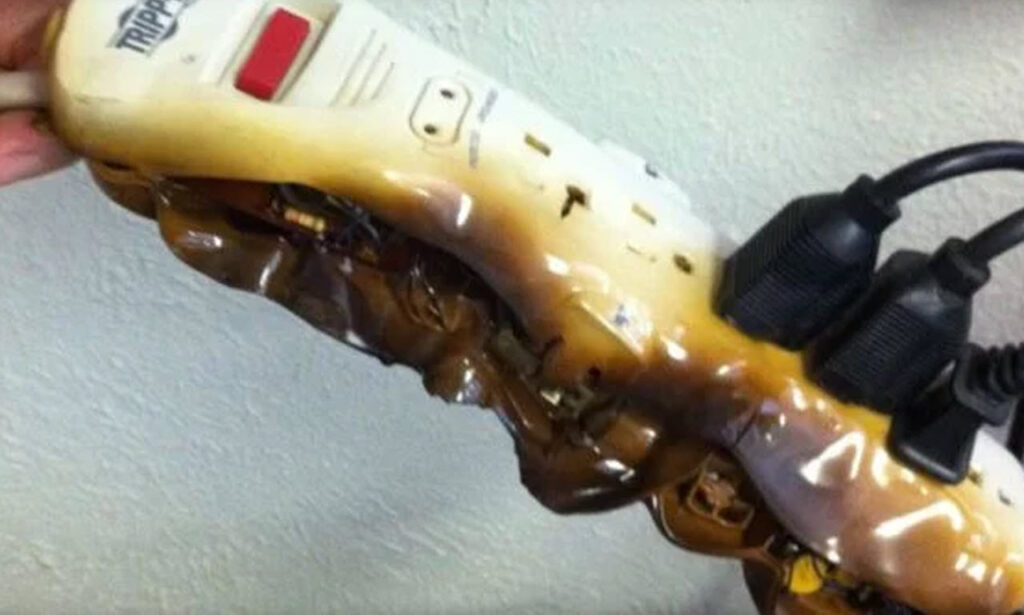
Even before plugging anything into a power strip consider the ammount of power they support. This is usually listed on the product itself.
High-capacity appliances need to draw a lot of power through an electrical circuit to work. Keep in mind that an appliance does not need to be large in size to draw large amounts of power.
Below is the list of appliances that should never be plugged into a power strip.
1. The oven: Even though the oven is not used continually, it is a power-hungry appliance that should not be plugged into a power strip. In fact, it should be plugged into its own wall outlet on its own circuit.
2. Refrigerator: Refrigerators require a lot of power and frequently cycle on and off which can easily overload a power strip and cause damage. Much like the oven, refrigerators require a wall outlet dedicated solely to powering the appliance.
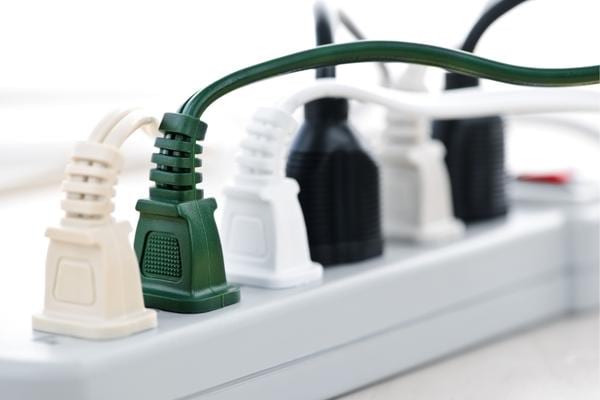
3. Washing Machine: When turned on, washing machines pull a lot of power. This is the main reason why these appliances shouldn’t share a receptacle with any other appliance or device.
Most washing machines use a max of up to 1400 watts, putting it dangerously close to the max load of most power strips. On top of that while working, washing machines are usually left unattended and work longer hours, at least an hour, which is long enough for a power strip to overheat.
4. Heating: Portable heaters should never be plugged into a power strip because most of them use 1,500 watts of energy on their high setting and they usually run for extended periods of time.

5. Microwave: Since they consume a lot of energy when used, most microwave ovens are plugged into their own receptacle and that is always a good practice.
6. Coffee Maker: Those who own a coffee maker are not fully aware of the power these appliances use, and this is why they should never be plugged into any sort of power strip or extension cord.
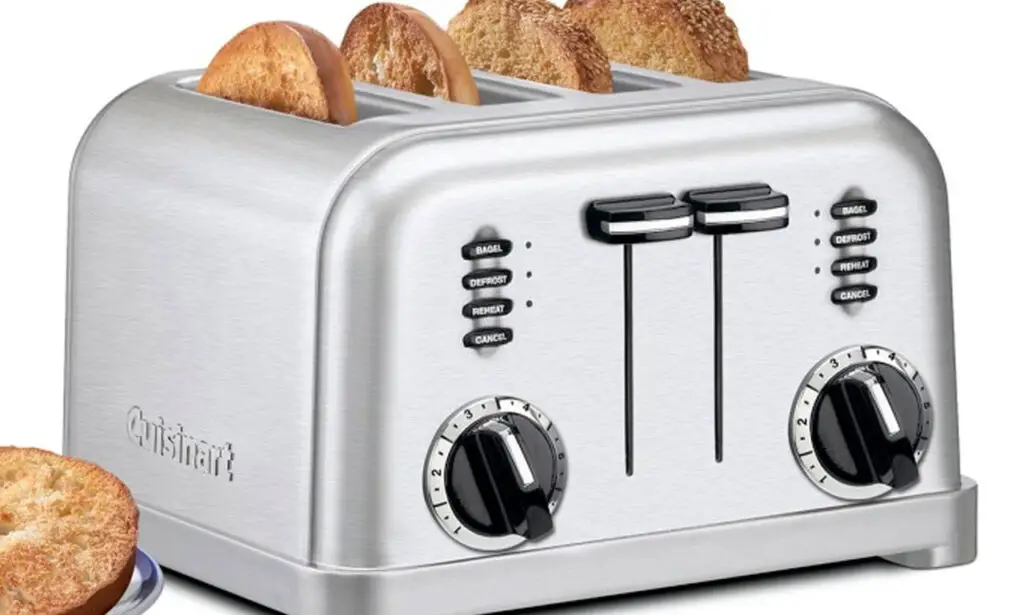
7. Toaster: You may think that browning up slices of bread or bagels doesn’t require a lot of energy, but the truth is that toasters use a lot of energy when in use and they should be plugged directly into the receptacle rather than a power strip.
8. Another Power Strip: Power strips are not meant to be used in conjunction with another power strip, although many people do exactly that. This, however, violates most safety codes because it can easily lead to overloading the electrical system.
9. Electronics (Computer, TV, Router): These types of electronic devices don’t necessarily use a lot of power on their own, but they are sensitive to surges and you can find yourself with a burnt out computer or TV very quickly if you plug them into a power strip.
If you want to protect these sensitive devices from power surges, opt for a power strip that functions as a surge protector.
A TV presenter with a Māori face tattoo fires back at cruel trolls.

Reiterating her pride in her cultural heritage and identity, a TV hostess with a customary Māori face tattoo gracefully responded to trolling remarks.
These pictures often start online debates about facial tattoos. Some people accept the cultural significance of these motifs, while others think tattoos should only be placed to the body.
Oriini Kaipara, 41, is a trailblazing TV presenter who made history at Newshub in New Zealand when she began her career as a newsreader. She was the first to present a primetime TV news report while donning the traditional Māori women’s marking, the moko kauae.
Moko kauae are vitally significant symbols of Māori history and identity, as they are considered by the native Polynesian population of the mainland of New Zealand. These facial tattoos, which are typically applied to the lips and chins, honor a woman’s heritage, status, and skills while also denoting her leadership in her community and within her family.

However, in the midst of all the appreciation, Newshub received an email from a viewer named David who was unhappy with Kaipara’s moko kauae.
He responded, “We continue to object strongly to you using a Māori newsreader with a moku [moko], which is offensive and aggressive looking,” as reported by the Daily Mail.A nasty look. She also speaks incoherently in our non-English tongue, Māori. Now put an end to it.
Kaipara boldly addressed the issue head-on in spite of David’s disparaging remarks, sharing images of the messages on her Instagram story and responding in a refined and polite way.
“Today, I’d had enough.” I responded. I never behave like that. She posted a picture of David’s message to Instagram with the remark, “I hit the send button and broke my own code.”
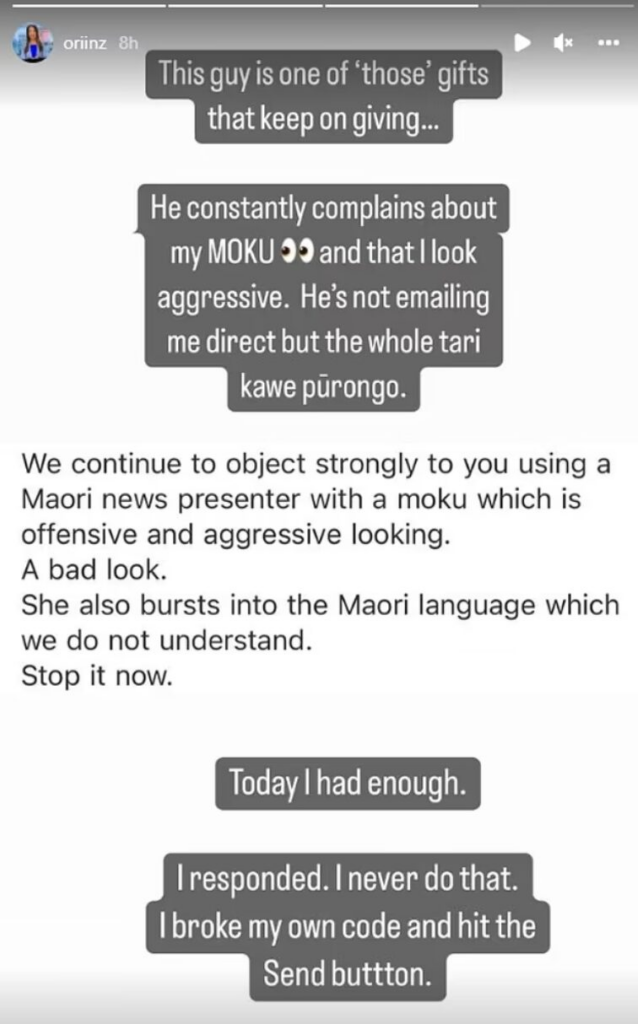
Furthermore, Kaipara made public the email discussion she had with David in which she said she couldn’t take David’s complaint seriously “given there is no breach of broadcast standards.”
She also made an effort to correct his spelling of “moko,” as David had referred to hers as “moku.”
Kaipara stated in her email, “I understand your complaints originate from a place of preference on how one must look on-screen.” This kind of intolerance, harassment, or prejudice is not warranted for Moko and others around her; they are not dangerous.
“We don’t intend to cause harm or have any bad intentions, and neither do we/I deserve to be treated with such disregard,” she continued. “Please stop complaining and wait until a later time, preferably the 1800s, to express your cultural ignorance and bias.”
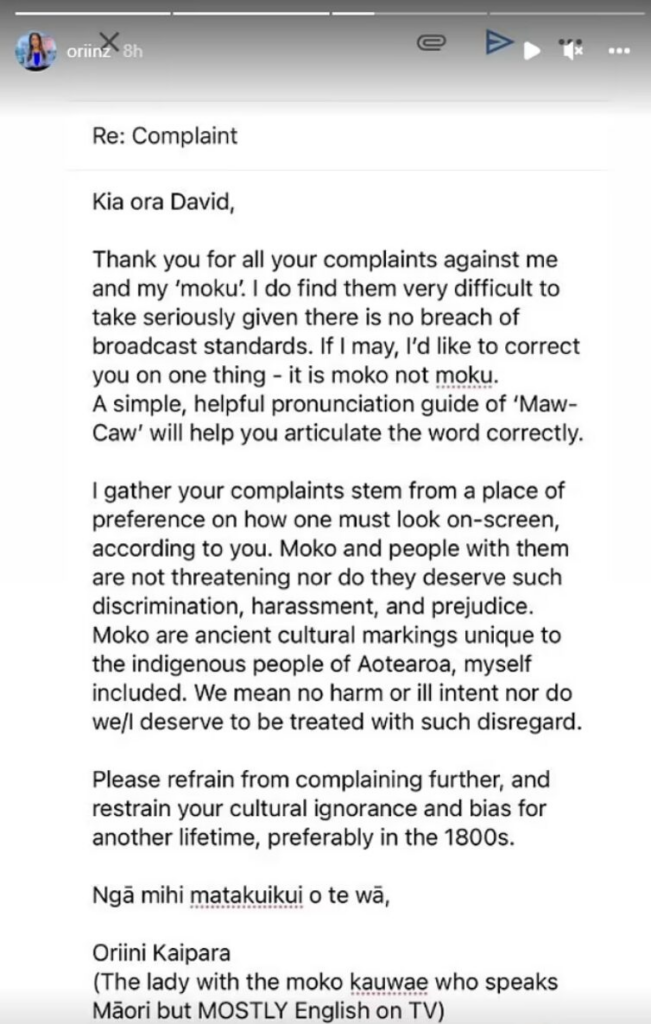
Kaipara swiftly stressed that most of her comments are pleasant and that ugly trolls are uncommon, even in the wake of David’s negative remarks.
Shortly after responding to David’s complaint, Kaipara spoke with the New Zealand Herald about the need for more Māori activists. “The fact that some people find my existence upsetting is evidence of the need for more Māori advocates in important positions throughout every sector,” she stated.
All things considered, Kaipara’s cool response serves as a powerful reminder of the importance of cultural pride and resilience in the face of adversity. She is also inspiring people to embrace their identities with courage and speak out against discrimination.
What are your thoughts on this story? Tell us in the section that follows!



Leave a Reply